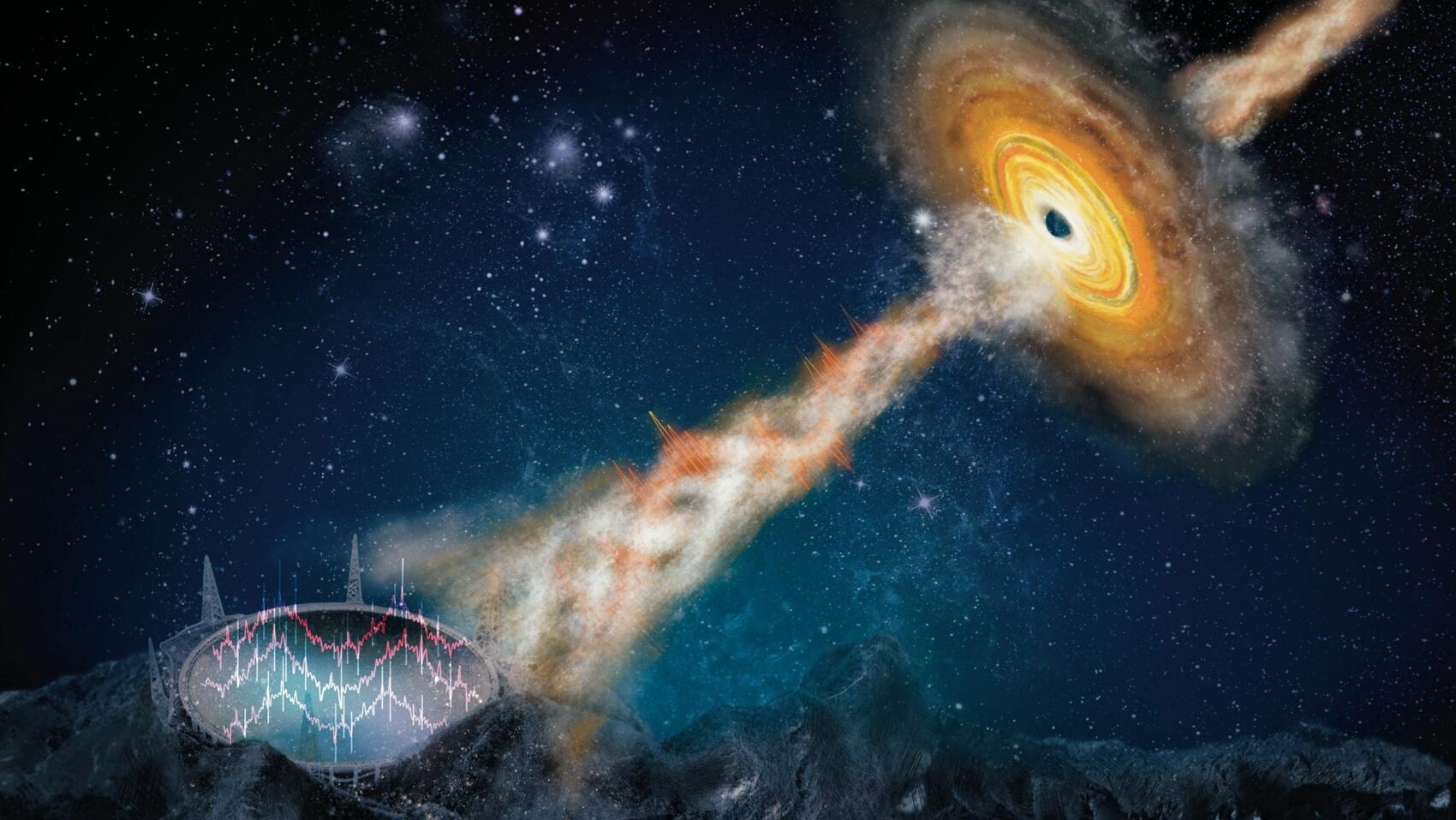Black holes are known to be highly puzzling objects with features that sound like they come directly from a sci-fi movie.

Artist’s conception of microquasar event captured by FAST Telescope. Image Credit: Professor Wei Wang, Wuhan University
Stellar-mass black holes with masses of around ten suns make their presence known by eating materials from their companion stars.
In a few instances, supermassive black holes housed at the center of a few galaxies develop bright, compact regions called quasars with masses equal to millions or billions of times that of the sun. A subset of accreting stellar-mass black holes that could launch jets of highly magnetized plasma are known as microquasars.
An international research group, including UNLV astrophysicist Bing Zhang, reports a steadfast observational campaign on the Galactic microquasar dubbed GRS 1915+105. The team showed features of a microquasar system that had never before been seen.
The study was reported in the Nature Journal on July 26th, 2023.
Utilizing the huge Five-hundred-meter Aperture Spherical radio Telescope (FAST) in China, astronomers found a quasi-periodic oscillation (QPO) signal in the radio band initially from any microquasar systems.
QPOs are known as a phenomenon that astronomers utilize to comprehend how stellar systems like black holes function. Also, while they have been noted in X-Rays from microquasars, their existence outside of this way—as part of the system’s radio emission—is special.
The peculiar QPO signal has a rough period of 0.2 seconds, or a frequency of about 5 Hertz. Such a signal does not always exist and only shows up under special physical conditions. Our team was lucky enough to catch the signal twice — in January 2021 and June 2022, respectively.
Wei Wang, Professor, Wuhan University
Wang headed the research group that made the breakthrough.
As per UNLV’s Zhang, director of the Nevada Center for Astrophysics and one of the study’s corresponding authors, this special feature might offer the first proof of activity from a “jet” initiated by a Galactic stellar-mass black hole.
While subject to certain conditions, a few black hole binary systems launch a jet—a mix of parallel beams of magnetic field and a charged matter—that moves at the speed of light.
In accreting black hole systems, X-rays usually probe the accretion disk around the black hole while radio emission usually probes the jet launched from the disk and the black hole.
Wei Wang, Professor, Wuhan University
Wang added, “The detailed mechanism to induce temporal modulation in a relativistic jet is not identified, but one plausible mechanism would be that the jet is underlying precession, which means the jet direction is regularly pointing towards different directions and returns to the original direction once every about 0.2 seconds.”
Zhang stated that a misalignment between the spin axis of the black hole and its accretion disk (extremely hot, bright spinning gasses encircling the black hole) could result in this effect, which is a natural impact of a dragging of spacetime next to a quickly spinning black hole.
Other possibilities exist, though, and continued observations of this and other Galactic microquasar sources will bring more clues to understand these mysterious QPO signals.
Bing Zhang, Astrophysicist, University of Nevada, Las Vegas
Journal Reference
Tian, P., et al. (2023) Subsecond periodic radio oscillations in a microquasar. Nature. doi.org/10.1038/s41586-023-06336-6